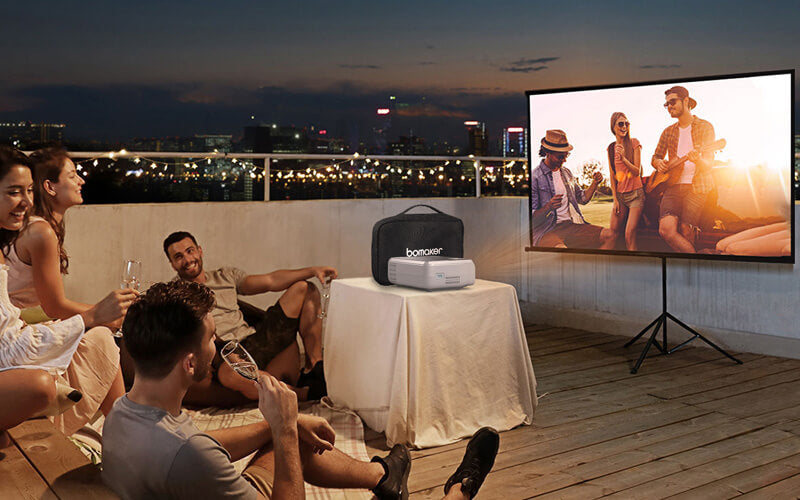
Perhaps you've always wondered how a projector setup might look in your living room, or maybe you've never considered replacing your television at all. Either way, we're here to show you that projectors are a capable contender for most televisions. We will be discussing all the major benefits and drawbacks of using TVs and projectors from cost to performance to convenience and setup, and you may just find that a projector setup is more suitable for you.
Cost
If you’re looking for a cost-effective or budget home theater solution, projectors do a wondrous job of delivering comparable features at a much lower price point. While most 4k HDR projectors currently cost about the same as 75” screen and larger 4k TVs, some of the best 1080p HD projectors run for less than $500. right now that’s about the price of a 40-50” TV, which is just not an optimal look for a lot of home theaters and living room setups anymore.
Performance
Projectors have recently made great strides in catching up and matching TV capabilities, and under optimal conditions most would see no difference. They can reach the same levels of picture quality and levels of connectivity to devices like laptops, blu-ray players, and gaming consoles.
High-end Projectors can now support 4k HDR, and several projectors support up-scaled 4k and native 1080p full-HD resolutions at 100-200” image size. Being 2-3 times the size of televisions brings a softer and more comfortable cinema experience, but there are a couple major factors that affect the performance of such massive displays.
The first major factor to take into consideration is choosing which surface to use as your projector screen. Although a wall is sufficient, you want your screen to be flat and wrinkle-free for the best picture quality, so we highly recommend a projection screen. Some of the best screens go for just $150-200, still far below the price tag of a comparable television, and many screens can be retracted into the frame or ceiling for a clean look.
The second major factor that affects projector performance is ambient lighting. Although a lot of people are under the misconception that a room needs to be completely dark for a projector to show clear images, it’s simply not true. As modern projectors have transitioned to laser, they no longer require complete darkness or blackout curtains as long as there's enough brightness to offset the ambient light.
This projector brightness, measured in lumens, can typically range from 1,000 to 3,000, and the amount you want largely depends on how dark or how bright your home theater is going to be. If you plan to be in a pitch black room, 1,500 lumens is plenty, but if you’re going to be in a brighter living room with windows, you might want to aim for a projector with 2,000-3,000 lumens. The biggest concern with ambient light is direct light hitting the projector screen, which can block out or fade parts of the image, so keep your blinds and curtains shut for the best color contrast and clarity.
Although throw distance, or the projector's optimal distance from the screen, is also a factor for projector image quality, recent projectors are now extremely flexible with the distances they can be placed at. This ranges from a few meters away to just inches away from the screen with ultra-throw projectors. They also have zoom and keystone correction to further adjust distance and angle, so you never have to worry that your projector is restricted to a single spot.
Setup
For a perfect projector setup you may consider hiring a professional to mount the projector, install the screen, and hide the cables, but it’s not impossible to do yourself. It isn’t as daunting as trying to mount a 100-lbs TV and it occupies a lot less space. As with televisions, most projectors either have a weak built-in speaker system or no speakers at all so you’ll also want to purchase a dedicated external sound system or sound bar to have powerful sound accompany your big screen view.
The final component to consider when purchasing a projector is the lamp bulb. They can last between a year and a few years before going dim and burning out depending on the usage, but you can extend the lifetime by cleaning out the dust filter and making sure the bulb doesn't overheat from constantly running all day. The price of a new lamp bulb usually ranges from $100-300 so you’ll want to do some research on how much yours costs.
Conclusion
To summarize, projectors can offer double the screen size for less than half the price while performing almost on par with modern standard TVs, any time of day. If you love to relax in a dim or dark room, want a comfortable big screen theater environment that doesn’t strain your eyes, and you don’t need pixel-perfect 4k HDR and absolute color contrast accuracy, consider trying out a projector the next time you’re looking to update your home theater.
We also just released our latest projector, the Bomaker GC555. Click it here.

